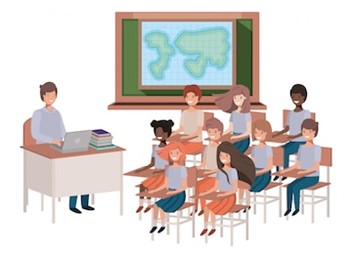Student “Looping”
Student looping is an education practice where a class of students advance to the next grade level with the same teacher they had the previous year. Sometimes this “looping” can continue for two or more consecutive years. Looping is not practiced everywhere; it depends on the school. Other various factors can influence a school’s decision in student looping such as parent input, availability of resources (such as classroom space and instructional materials), grade levels, and teacher experience.
The Benefits of Student Looping for Students
It has been determined that there are notable advantages to the practice of student looping. Extended period of looping has shown greater student teacher familiarity. Such familiarity has been shown to improve academic achievement. As teachers develop a deeper personal understanding of their students, they gain insight into each student’s academic strengths and weaknesses. This helps the teachers provide targeted assistance to help students meet their individual academic needs on an annual basis. The teachers become knowledgeable about the areas where each student requires the most work, building upon the progress and challenges observed in the previous year.
In addition, it has been shown that student looping has provided additional emotional and mental benefits for students that often get neglected. For instance, looping provides students with consistent support, a sense of stability, and a reduction of transition stress that normally comes when students have to adapt to a new classroom and new teacher each year. When students feel understood and comfortable with their teacher, they are more likely to develop self-confidence in their academic abilities. These advantages highlight the potential for looping to provide a positive and beneficial learning environment.
The Benefits of Student Looping for Schools
The benefits of student looping extend beyond its positive impact on students. Schools too, experience a range of improvements as a result of implementing this practice, making it a mutually advantageous approach for both. For instance, schools save time, effort, and resources by not having the teachers spend time on “icebreaker lessons” to get to know the students. Since the relationships between teachers and students have already been well-established through looping, teachers can promptly initiate the curriculum, enabling a smoother and more efficient start to the academic year.
Further, educational studies have revealed that the practice of student looping has reduced the necessity of student referral to special education programs. Since teachers are familiar with the students’ needs, looping prevents students from falling behind on material or from experiencing learning difficulties. This in turn reduces the risk of academic, and even behavioral challenges, that might lead to special education referrals. The practice of looping enhances teacher and parent relations which contributes to a more supportive education system. Teachers build a more personal and lasting rapport with the students’ families, and this paves the way for open and constructive communication as teachers gain a comprehensive understanding of their students’ families and home environments.
Student looping offers a myriad of advantages to students and to schools, collectively creating a more supportive and engaging environment that enriches the educational experience for all involved.

